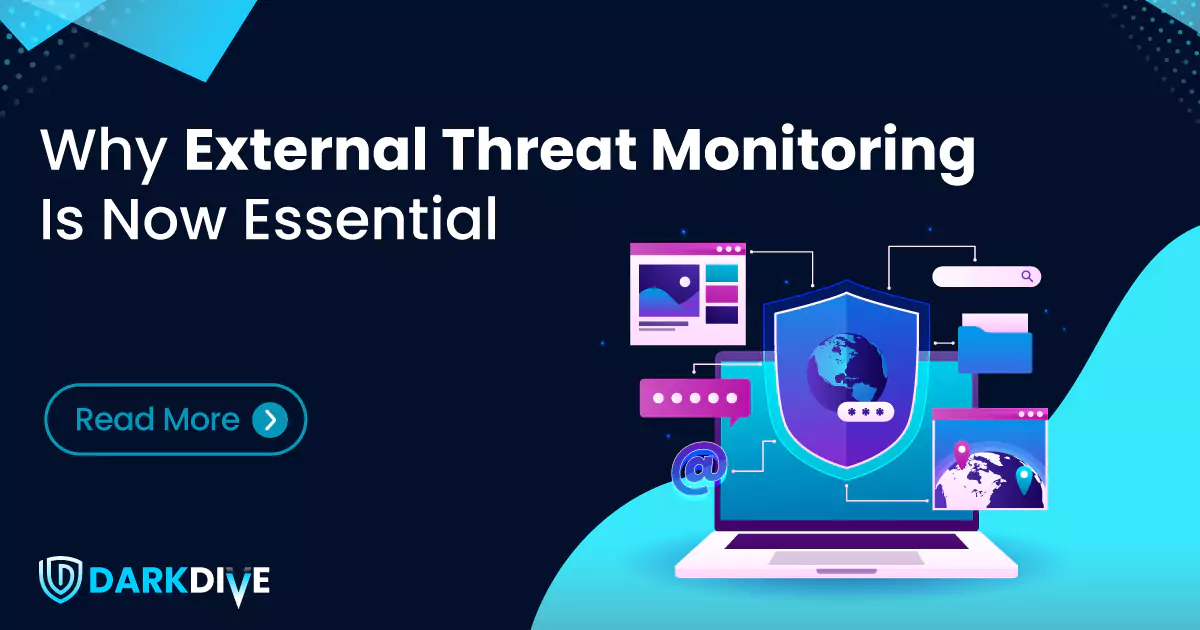
Most organizations put faith in their perimeter: firewalls, antivirus software, and endpoint detection systems. But cybercriminals don’t knock on the front door. They operate where you’re not looking. They plan, test, and talk in spaces beyond your network, on the dark web. And if your visibility stops at your firewall, you’re not tracking the real risk.
This is where threat actors exchange stolen credentials and blueprint phishing campaigns and offer access to compromised infrastructure—yours or your vendors’. While your internal systems may be secure, the external chatter can say otherwise. And ignoring that conversation doesn’t make it go away. It just means you’re the last to know.
Dark Web Risks Outside Your Firewall
Security breaches rarely start with brute force anymore. Instead, they begin with reconnaissance—often using data already floating in criminal circles. Maybe your credentials are bundled with others in a database dump. Maybe a phishing kit is being customized using your brand. Or maybe threat actors are simply asking around to find someone with insider access.
Here’s what early-stage cybercriminal activity can look like:
- Phishing kits branded with your logos
- Requests for insider access to your systems
- Leaked credentials repackaged in breach databases
- Mentions of your company or employees in dark web forums
- Listings for access to your environments (direct or through vendors)
These are the earliest indicators of targeting. By the time your internal alerts are triggered, cybercriminals may already be several steps ahead.
How Cybercriminals Prepare the Ground
What makes external monitoring so crucial is how collaborative cybercrime has become. Attackers don’t work alone. They share findings, rank tools, test entry points, and recommend techniques based on what worked last time.
Let’s say your team accidentally exposes credentials in a public repository. A forum post appears discussing access to your staging server. A few weeks later, that access is bundled into a broader breach sale. Somewhere between those events is a window to intervene. But only if you’re watching.
What internal tools miss is intent. Attackers might not act immediately. They might simply observe—slowly building a profile of your environment, your employees, or your tech stack. That behavior is often more valuable to monitor than a signature-based malware alert.
Why Firewalls Can’t Catch This
Firewalls are designed to block threats. But what if the threat isn’t inbound? What if it’s already exfiltrated—customer data, login credentials, or intellectual property—and now for sale in a closed Telegram group? What if the real activity isn’t a breach but a conversation?
Traditional security stacks don’t have access to these ecosystems. They’re blind to external reconnaissance, data auctions, and the language threat actors use to identify high-value targets. And that’s what makes behavior monitoring essential—not just to respond faster, but to anticipate what’s coming next.
The Hidden Role of Reputation and Trust
Even if no exploit occurs, being mentioned in threat actor communities carries reputational weight. Your company could be perceived as vulnerable. That perception can influence everything from targeted phishing waves to insider recruitment attempts.
Worse still, when a breach happens through a third-party vendor, your company might be the one named—even if the incident started elsewhere. Knowing how and where your organization is being discussed gives you the chance to prepare your defenses, notify affected partners, and update policies before attackers make the next move.
How DarkDive Helps You Stay Ahead
DarkDive doesn’t just surface stolen data. It tracks the behavior behind the breach. It monitors forums, marketplaces, invite-only groups, and real-time breach chatter to detect early mentions of your business, assets, or employees. From credential bundles to access listings, it picks up on the signs that indicate you’re being evaluated—or already compromised.
Instead of waiting for an attack to reach your endpoints, DarkDive alerts you when your company becomes part of the conversation. That means faster decisions, smarter containment, and a better chance to protect what matters before it becomes public.
Conclusion
Firewalls and EDRs still have their place. But they were never meant to see beyond your walls. Today’s attackers aren’t just exploiting systems—they’re exploiting gaps in visibility. If you’re not watching where they talk, trade, and plan, you’re not seeing the full threat picture.
With DarkDive, you shift from defense to intelligence. You don’t just block attacks. You understand them before they happen.
